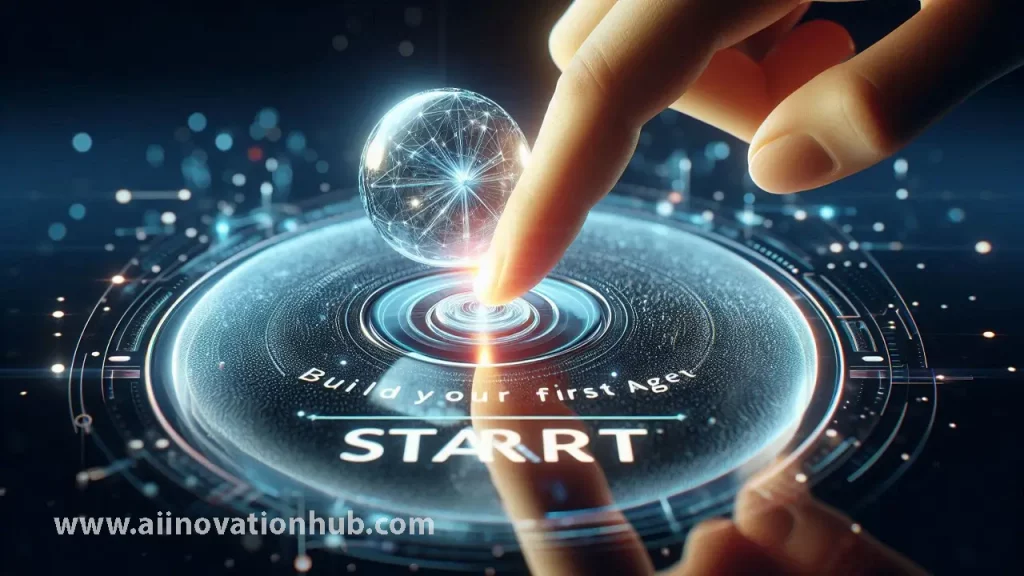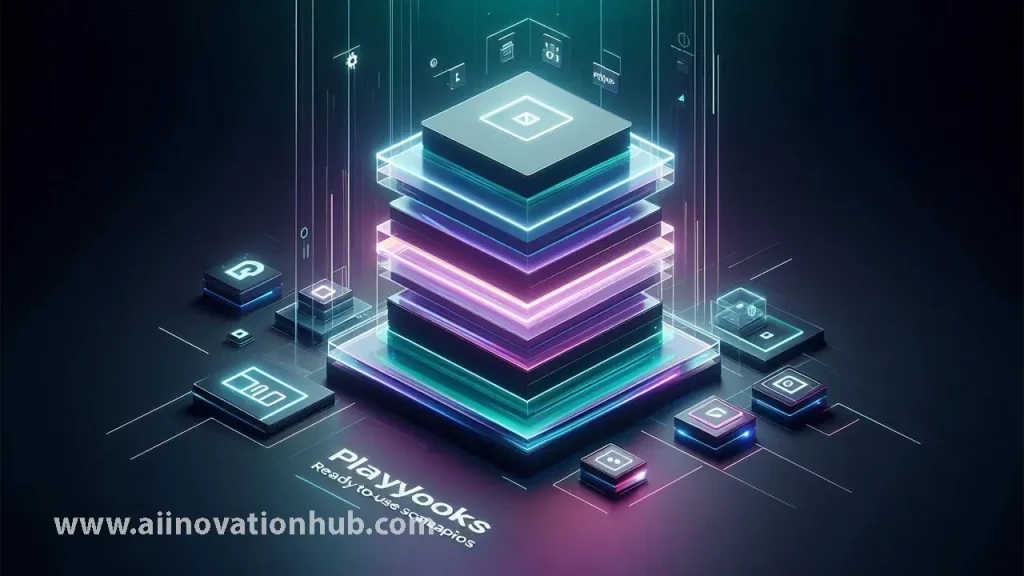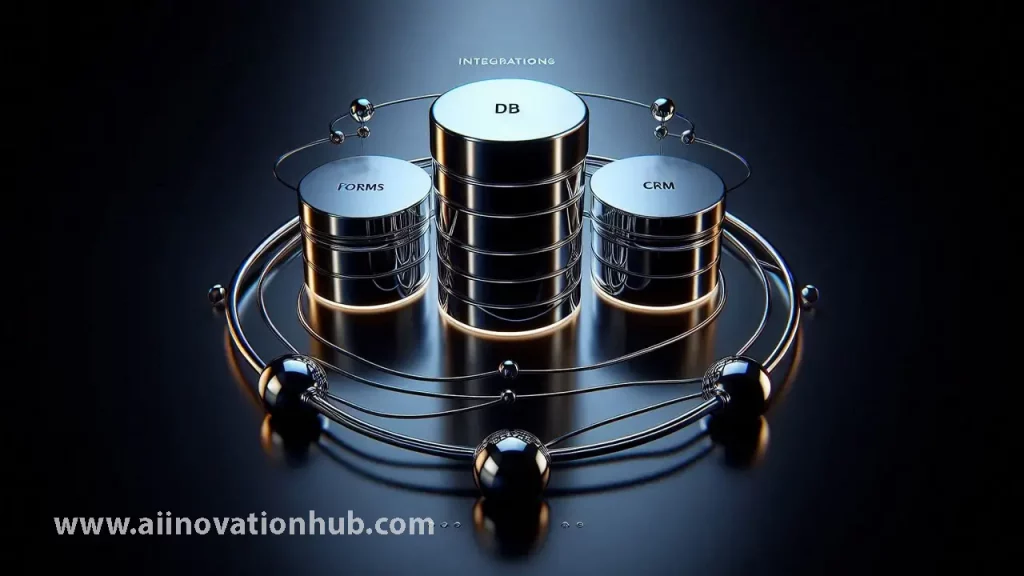Unlock the Future of AI: A Deep Dive into Google Vertex AI Agent Builder
The race to build intelligent, conversational AI is on, and having the right tools can make all the difference. Enter the Google Vertex AI Agent Builder, a powerful platform designed to democratize the creation of sophisticated AI agents. This isn’t just another chatbot builder; it’s a comprehensive suite that leverages Google’s cutting-edge large language models (LLMs) to create systems that can reason, search for information, and take action. Whether you’re a startup looking to enhance customer service or an enterprise aiming to automate complex workflows, the Google Vertex AI Agent Builder provides the foundational technology to bring your ideas to life, quickly and efficiently.
In this exhaustive guide, we will explore the Google Vertex AI Agent Builder from every angle. We’ll break down its core components, walk you through a hands-on Vertex AI Agent Builder tutorial, demystify the Vertex AI Agent Builder pricing structure, and delve into the official Vertex AI Agent Builder documentation. You’ll also see concrete Vertex AI Agent Builder examples and understand how it compares to other tools in the Google ecosystem, like Gen App Builder and AI Studio. By the end, you’ll have a clear roadmap to build AI agents with Vertex AI that are not just functional, but truly transformative for your business.
★★★★★
«Rare case when the review really helps to make a decision. aiinovationhub.com clearly described the difference between Veo 3 and Sora 2: rendering speed, quality of movement, work with text-promtos and where the real “burning” budget. Cherry – fair pros/ cons and scripts: ads, YouTube, performances-creatives. In the end I chose Veo 3 for fast iterations, and Sora 2 for “wow-visual”. If you make a video for business – start with this material: https://aiinovationhub.com/veo-3-vs-sora-2-who-better-aiinnovationhub-com/»
★★★★★
Finally the AI catalog, where everything is on the case: clear comparisons, real cases and simple checklists of implementation. On aiinnovationhub.shop I have collected a stack for marketing (content, video, traffic) and sales support. Liked short “how-to” and honest pros/cons of each tool – save budget and nerves. If you want to not just «play» with AI, but get the result – start from here: https://aiinnovationhub.shop/»
- Svetlana M., Marketing Manager

What is Google Vertex AI Agent Builder? Unpacking the Core Concept
At its heart, the Google Vertex AI Agent Builder is a service within the Google Cloud Vertex AI platform that simplifies the process of creating, deploying, and managing generative AI agents. An “agent” in this context is more than a simple question-answering bot. It’s an AI application that can plan a sequence of steps, utilize tools (like a search engine or a code executor), and interact with external systems to accomplish a specific goal.
Think of it as the brain you can customize. The Google Vertex AI Agent Builder provides the scaffolding—the reasoning engine, the tool-use framework, and the safety features—while you provide the specific knowledge and goals. This is often achieved through a technique called Retrieval-Augmented Generation (RAG), where the agent grounds its responses in your own proprietary data, ensuring accuracy and relevance.
Key capabilities include:
- Conversational Interface: Create natural, multi-turn dialogues with users.
- Grounding with Enterprise Search: Connect the agent to your internal documents, websites, and databases so it can provide answers based on your specific data.
- Tool Use and Extensibility: Empower the agent to perform actions, such as querying an API, sending an email, or fetching real-time data.
- Safety and Governance: Built-in controls to filter harmful content and manage data privacy.
Why Use Vertex AI Agent Builder? Top 7 Game-Changing Features
The market is flooded with AI tools, so why choose the Google Vertex AI Agent Builder? Its power lies in a combination of seamless integration, enterprise-grade robustness, and innovative features. Here are the Top 7 reasons it stands out as a premier platform to build AI agents with Vertex AI.
1. Seamless Integration with Google’s AI Ecosystem
The Google Vertex AI Agent Builder isn’t an isolated product. It sits natively within the Vertex AI platform, giving you immediate access to a vast family of foundation models like Gemini and PaLM 2. This means you can easily swap out underlying models to find the one that best suits your agent’s needs for cost, speed, or capability, without rebuilding your entire application.
2. Powerful Enterprise-Grounding with RAG
This is arguably its killer feature. The agent can be directly connected to Vertex AI Search, allowing it to pull information from a curated set of documents, websites, and structured data. This ensures the agent’s responses are not just generic but are specifically tailored and verified against your company’s knowledge base, eliminating “hallucinations” and building user trust. For example, an agent for a site like antiquorum.shop could use this to provide highly accurate information about the provenance and value of rare items directly from its catalog and historical records.
3. Intuitive No-Code/Low-Code Builder
You don’t need a team of machine learning PhDs to get started. The console for the Google Vertex AI Agent Builder is visual and intuitive. You can define conversation flows, add data sources, and configure safety settings through a user-friendly interface, dramatically speeding up development time. This allows product managers and domain experts to actively participate in the creation process.
4. Built-in Tool Creation and Extensibility
Agents become truly powerful when they can do things. The Google Vertex AI Agent Builder allows you to define “tools” that your agent can use. This could be a simple Google search tool or a custom function that connects to your internal CRM. For instance, a travel agent built on mavidi.online could use a tool to check live flight availability and prices from an airline’s API.
5. Robust Safety and Privacy Controls
Google has built comprehensive safety features directly into the platform. You can set grounding checks to force the agent to stick to its provided data, configure multi-tiered content filters, and ensure all interactions are compliant with your enterprise’s data governance policies. This is critical for deploying AI in regulated industries.
6. Scalable and Managed Infrastructure
As a Google Cloud service, you benefit from the same infrastructure that powers Google Search and YouTube. The Google Vertex AI Agent Builder is inherently scalable, able to handle anything from a few internal users to millions of customer interactions without you worrying about server management, load balancing, or downtime.
7. Comprehensive Analytics and Iteration Tools
You can’t improve what you can’t measure. The platform provides detailed conversation logs, analytics on user queries, and tools to review and label problematic responses. This data-driven feedback loop is essential for continuously refining your agent’s performance and accuracy over time.

Vertex AI Agent Builder Pricing: Understanding the Cost Structure
Before diving headfirst into development, it’s crucial to understand the Vertex AI Agent Builder pricing model. Unlike a simple subscription, costs are primarily based on usage, which makes it cost-effective for projects of all sizes. The Vertex AI Agent Builder documentation on pricing is the definitive source, but here’s a breakdown of the key components:
- Base Model Usage: You pay for the tokens (pieces of words) processed by the underlying large language model (e.g., Gemini Pro) for both input (your prompt and the user’s question) and output (the agent’s response).
- Vertex AI Search: This is a separate but often integral service. Pricing is based on the number of search operations performed and the volume of data ingested and stored for grounding.
- Tool Usage: If your agent uses tools that call external APIs, you will incur any costs associated with those external services.
- Network Egress: Standard Google Cloud charges apply for data leaving the Google Cloud network.
Cost-Saving Tip: Start with a prototype! The Google Vertex AI Agent Builder is perfect for building a proof-of-concept with a limited dataset. You can test core functionalities and user interactions with a very small budget before scaling up. For those building these agents, ensuring you have the right hardware is key; check out our guide on laptopchina.tech on how to choose a laptop for AI development and testing to optimize your local workflow before deployment.

Vertex AI Agent Builder Tutorial: Building Your First AI Agent in 60 Minutes
Ready to get your hands dirty? This Vertex AI Agent Builder tutorial will guide you through creating a simple customer service agent for a fictional tech store. We’ll create an agent that can answer questions about products and store policies.
Prerequisites:
- A Google Cloud Project with billing enabled.
- The Vertex AI API enabled.
Step 1: Create an Agent
- Navigate to the Vertex AI section of your Google Cloud Console.
- In the left sidebar, go to “Agent Builder” and click “Create Agent.”
- Give your agent a name (e.g., “TechStore Helper”) and select a foundational model (Gemini Pro is a great starting point).
Step 2: Add Grounding Data
This is where we teach the agent about our business.
- In the agent configuration, find the “Grounding” section.
- Click “Create Data Store” and choose “Unstructured Data.”
- Upload a PDF of your store’s FAQ, return policy, and a text file with descriptions of your top 10 products. The Google Vertex AI Agent Builder will ingest this data and create a searchable index.
Step 3: Define the Starters (Optional but Recommended)
“Starters” are pre-defined conversation prompts you can show users.
- In the “Development” section, go to “Starters.”
- Add starters like:
- “What is your return policy for laptops?”
- “Can you recommend a wireless mouse for gaming?”
- “What are your store’s opening hours?”
Step 4: Test Your Agent
Use the built-in chat simulator on the right side of the console. Ask it questions like, “If I buy a keyboard, how long do I have to return it?” The agent should now answer based on the policy document you uploaded, not from its general knowledge.
Step 5: Review and Adjust Safety Settings
Go to the “Safety” section. Here, you can adjust the thresholds for blocking harmful, derogatory, or sexually explicit content. It’s good practice to start with moderate settings and tighten them based on test results.
Step 6: Deploy for Testing
Once you’re happy with the agent’s performance, you can deploy it to a web UI for internal testing or use the API to integrate it into your application.
This basic Vertex AI Agent Builder tutorial demonstrates the core workflow. From here, you can explore adding dynamic tools. Imagine an e-commerce site like smartchina.io using a tool to let the agent check real-time inventory for a specific gadget, moving from answering questions to facilitating sales directly.

Vertex AI Agent Builder Examples: Real-World Applications
Theory is good, but Vertex AI Agent Builder examples make the potential tangible. Here’s how different industries are leveraging this technology.
- Customer Support Agent: A telecom company creates an agent grounded in its technical manuals, support tickets, and service agreements. It can handle common queries like troubleshooting internet connectivity or explaining billing cycles, freeing up human agents for more complex issues.
- Internal Knowledge Management Agent: A large corporation deploys an agent that has access to all internal HR policies, project documentation, and software development guidelines. Employees can ask natural questions like, “What is the process for booking paternity leave?” or “Where can I find the Q3 marketing presentation?”
- Personalized Shopping Assistant: As mentioned, a specialty retailer like
antiquorum.shopcould use an agent to provide connoisseur-level advice on antiques, drawing from a deep database of historical information, artist profiles, and market trends. - Field Service Agent for Automotive: A service like
autochina.blogcould power an AI assistant for mechanics. The agent could be grounded in vehicle repair manuals, recall notices, and parts catalogs, helping diagnose issues and order the correct parts faster. - Travel Planning Agent: A platform like `mavidi.online** could deploy an agent that not only suggests destinations based on user preferences but also uses tools to check visa requirements, weather forecasts, and local event calendars.

Vertex AI Agent Builder vs AI Studio and Gen App Builder: Choosing the Right Tool
The Google Cloud AI portfolio can be confusing. How does the Google Vertex AI Agent Builder fit in alongside Gen App Builder and AI Studio?
- Vertex AI Agent Builder: The focus here is on creating conversational, goal-oriented agents. Its strength is multi-turn dialogue, reasoning, and using tools. It’s the best choice when you want an AI that can have a extended, helpful conversation to solve a problem. Use Case: A complex customer service bot, an internal research assistant.
- Gen App Builder (Generative AI App Builder): This is the predecessor and a broader tool. It’s fantastic for building search-centric and recommendation applications. Think of a powerful, generative search engine for your website or a product recommendation widget. While it can do chat, its core strength is ingest-and-retrieve. Use Case: A semantic search engine for your corporate wiki, a product discovery tool for an e-commerce site.
- AI Studio (formerly MakerSuite): This is a rapid prototyping and experimentation tool. It’s a web-based UI for quickly prompting Google’s LLMs, generating text, and designing prompts. It’s not for building deployable agents but for ideating and testing model capabilities before you commit to building in Vertex AI. Use Case: A developer quickly testing different prompts for a new feature, a content writer brainstorming ideas with AI.
In summary: Use AI Studio to play and prototype. Use Gen App Builder for powerful search and recommendation apps. Use the Google Vertex AI Agent Builder for creating interactive, conversational agents that can use tools.

Navigating the Vertex AI Agent Builder Documentation
The official Vertex AI Agent Builder documentation is your best friend for deep, technical details. It is comprehensive and includes:
- Quickstart Guides: Step-by-step instructions for common tasks.
- API References: Detailed information on every API endpoint for custom integrations.
- Best Practices: Guidance on prompt engineering, data preparation, and agent design.
- Troubleshooting Guides: Help for common errors and issues.
Bookmark the documentation and refer to it often as you build. It is the single source of truth for features, updates, and advanced configurations.
Conclusion: Your Journey to Building Advanced AI Agents Starts Now
The Google Vertex AI Agent Builder represents a significant leap forward in making powerful, conversational AI accessible. It abstracts away the immense complexity of managing LLMs and provides a structured, safe, and scalable environment for innovation. We’ve covered the essentials—from the Top7 innovative features and a clear Vertex AI Agent Builder pricing overview to a practical Vertex AI Agent Builder tutorial and inspiring Vertex AI Agent Builder examples.
The platform’s ability to ground responses in your data, its extensibility through tools, and its seamless cloud integration make it an unparalleled choice for businesses ready to embrace the next wave of automation and user interaction. The line between human and machine assistance is blurring, and with the Google Vertex AI Agent Builder, you have the tools to be on the right side of that transformation.
The journey from concept to a functioning AI agent has never been shorter. Start your Google Cloud project today, dive into the Vertex AI Agent Builder documentation, and begin building the intelligent assistants that will define the future of your business.
Ready to build real AI agents without drowning in docs? Meet Google Vertex AI Agent Builder — the fastest way to go from idea to working chatbot, RAG search, or multi-step workflow. In our new guide, we break down pricing, the essential setup, and a clean step-by-step to launch your first agent in hours, not weeks. Simple screenshots, zero fluff, and a checklist you can copy.
Why it’s worth your time:
• Clear path from dataset → grounding → evaluation
• What to use now (Agent Builder) vs. when to switch to Google Cloud AI Applications
• Cost tips so your bill stays friendly
• Tiny gotchas devs hit on day one — and how to dodge them
Dive in here: https://aiinovationhub.com/google-vertex-ai-agent-builder-aiinnovationhub/
Save it, share it with your team, and tell us what you’re building. We’ll feature the best use cases on aiinovationhub.com 🚀
#GoogleCloud #VertexAI #AgentBuilder #AIAgents #GenAI #RAG #LLM #PromptEngineering #MLOps #aiinnovationhub #AIforBusiness
Related
Discover more from AI Innovation Hub
Subscribe to get the latest posts sent to your email.
Pingback: Runway Gen-3 vs Pika The best Tests aiinnovationhub.com
Pingback: ChatGPT 5 Overview: Top 7 — aiinnovationhub.com